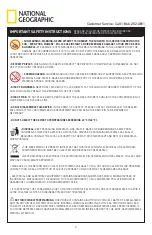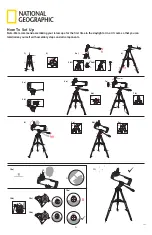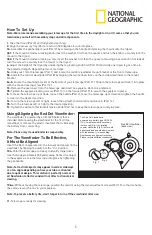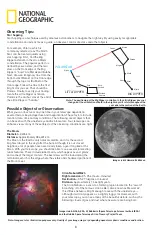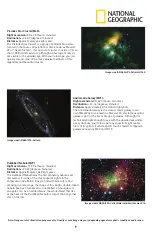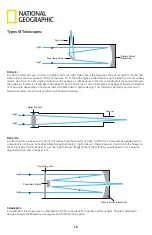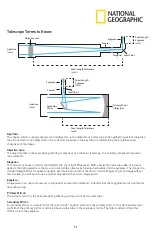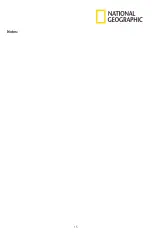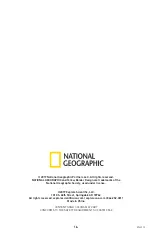
12
12
Magnification:
The magnification corresponds to the difference between observation with the naked eye and observation through
a magnifying device like a telescope. If a telescope configuration has a magnification of 30x, then an object viewed
through the telescope will appear 30 times larger than it would with the naked eye. To calculate the magnification of
your telescope setup, divide the focal length of the telescope tube by the focal length of the eyepiece. For example, a
20mm eyepiece in a telescope with a 1000mm focal length will result in 50x power, which will make the object appear
50 times larger. If you change the eyepiece, the power goes up or down accordingly.
Focal ratio
The focal ratio of a telescope is determined by dividing the telescope’s focal length by its aperture (usually expressed
in millimeters). It plays a key role in determining a telescope’s field of view and significantly impacts imaging time in
astrophotography. For example, a telescope with a focal length of 1000mm and a 100mm clear aperture has a focal
ratio of f/10.
Focal length (Telescope):
The focal length is the distance in millimeters between the objective lens or primary mirror and the point at which
entering light rays converge — otherwise known as the focal point. The focal lengths of the telescope tube and the
eyepiece are used to determine magnification.
Focal length (Eyepiece):
The focal length is the distance in millimeters between the center of the first lens element in an eyepiece and the focal
point. The focal lengths of the telescope tube and the eyepiece are used to determine magnification. Short eyepiece
focal lengths produce higher magnifications than long eyepiece focal lengths.
Exit Pupil
The exit pupil is the diameter of the beam of light coming out of the eyepiece. To calculate exit pupil, divide the focal
length of your eyepiece by your telescope’s focal ratio. For example, if you use a 20mm eyepiece with an f/5 telescope,
the exit pupil would be 4mm.
Magnification =
Telescope Focal Length
Eyepiece Focal Length
Focal Ratio =
Telescope Focal Length
Telescope Aperture
Exit Pupil =
Eyepiece Focal Length
Telescope Focal Ratio
Eyepiece Lens
Long Eye Relief Distance
Eyepiece Lens
Short Eye Relief Distance
Eyepiece Lens
Exit Pupil (mm)
Telescope Focal Length
1000mm
Eyepiece
Focal Length
20mm
Aperture
102mm
Summary of Contents for NT114CF
Page 14: ...14 Notes...
Page 15: ...15 Notes...


